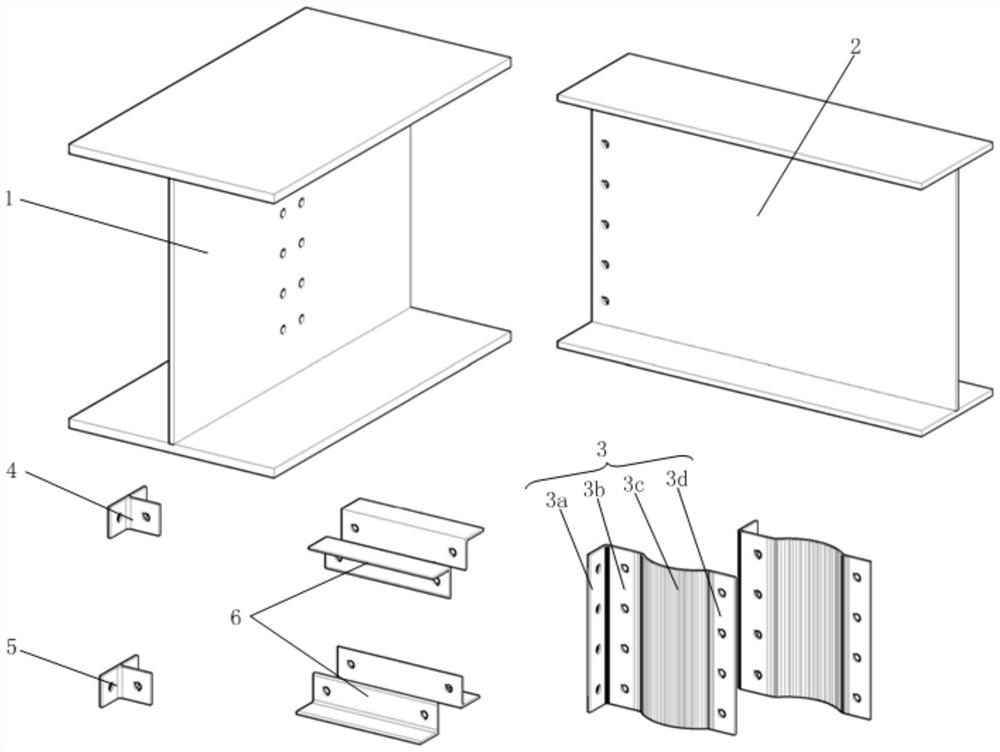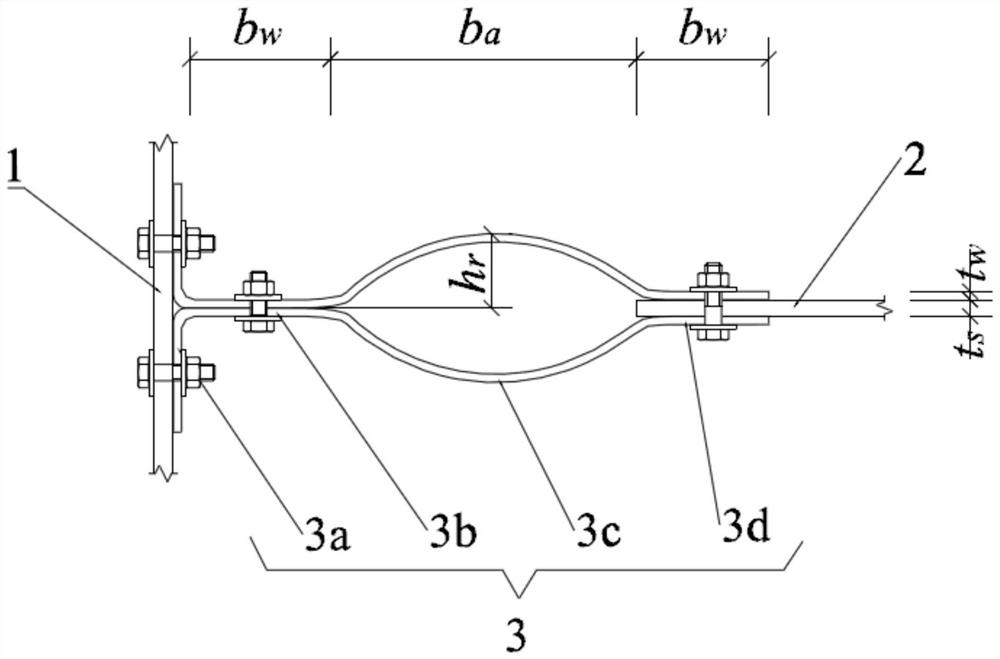Buckling-resistant steel structure primary and secondary beam connecting joint
A technology for connecting nodes and primary and secondary beams, which is applied in the direction of building components, building structures, buildings, etc., can solve the problems that the strength and stability of nodes cannot meet higher design requirements, and achieve strong buckling resistance, sufficient shear stiffness, The effect of sufficient impact resistance performance
- Summary
- Abstract
- Description
- Claims
- Application Information
AI Technical Summary
Problems solved by technology
Method used
Image
Examples
Embodiment
[0024] see Figure 1 ~ Figure 4 As shown, the present invention provides a buckling-resistant steel structure primary and secondary beam connection node, including a main beam 1 and a secondary beam 2, the main beam 1 and the secondary beam 2 are connected by a pair of oppositely arranged fish webs 3, The fish web 3 includes a vertical wing 3a, a first flat wing 3b, an arc wing 3c, and a second flat wing 3d connected in sequence, the vertical wing 3a is connected to the main beam 1, and the second flat wing 3d is connected to the secondary beam 2.
[0025] Specifically, the web at the notch of the secondary beam at the general beam node is prone to buckling failure. This application adopts a non-notch connection method for the secondary beam 2, and connects the main beam and the secondary beam through a buckling-resistant fish web structure, and transfers The shear force can avoid the material loss caused by the notch of the secondary beam in the traditional design, and the bu...
PUM
 Login to View More
Login to View More Abstract
Description
Claims
Application Information
 Login to View More
Login to View More - R&D
- Intellectual Property
- Life Sciences
- Materials
- Tech Scout
- Unparalleled Data Quality
- Higher Quality Content
- 60% Fewer Hallucinations
Browse by: Latest US Patents, China's latest patents, Technical Efficacy Thesaurus, Application Domain, Technology Topic, Popular Technical Reports.
© 2025 PatSnap. All rights reserved.Legal|Privacy policy|Modern Slavery Act Transparency Statement|Sitemap|About US| Contact US: help@patsnap.com



